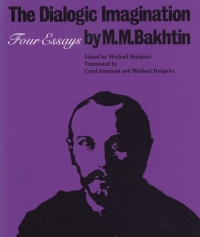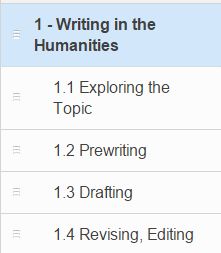Olson, Gary. “Toward a Post-Process Composition: Abandoning the Rhetoric of Assertion.” Thomas Kent, ed. Post-process Theory: Beyond the Writing-Process Paradigm. Carbondale: Southern Illinois University Press, 1999. 7-15. eBook Collection (EBSCOhost). Web. 25 Oct. 2015.

Now president of a liberal arts college in New York, Gary Olson’s work as a scholar of rhetoric and writing studies is well known. He has written or edited more than two dozen books and published over 50 articles.
Olson opens this chapter by describing the history of the process movement within teaching composition. He says, [W]riting is an ‘activity,’ an act that itself is composed of a variety of activities” (7). He reels off what seem to be platitudes — or probably more to his point, Theories — about process within writing, ranging from discovery and invention to revision and peer review. He argues that, from a post-modern standpoint, process is limiting, not because authors (i.e., students) avoid writing in a manner that one might consider process (e.g., prewriting, drafting, and re-visioning), but because teachers of writing laud process as a system for all, creating a “Theory of Writing” that defies the anti-foundationalist approach that claims that local knowledge is all one can know.
As Olson states, “This [Theory of Writing] is what Thomas Kent and other post-process theorists mean when they complain that process scholars — despite whatever other ideological allegiances may inform their work — are attempting to systematize something that simply is not susceptible to systematization” (8).
Analyzing these arguments, then, Olson posits that process-oriented writing has historically forced writers to compose under a model that presupposes a “rhetoric of assertion,” and accordingly, he calls for readers to question this “time-honored value in composition” for its entrenchment in Western culture’s epistemology of writing. Instead, Olson argues for a more dialogic, sophistic, exploratory form of writing.
Olson continues by examining the rhetoric of assertion from the standpoints of three post-modern theorists: Harding, Haraway, and Lyotard. Sandra Harding provides a feminist viewpoint, scrutinizing the masculine-centered nature of the rhetoric of science and its supposedly objective structure (which is not reality), calling for an “inclusiveness of alternative positionings” (10).

Olson references the works of Haraway, Lyotard, and Harding in discussing the rhetoric of assertion
Following Harding, Olson moves to Donna Haraway, popular for her theories on cyborg writing, who holds to the conception that writing is “authoritative, assertive, [and] phallogocentric . . . “ (12). Haraway does not believe that writing cannot have authority, but she believes writing “must reveal how authority is implicated in discourse” (12). Olson posits that authority stems from the rhetoric of assertion.
Addressing the final theorist in his chapter, Olson discusses Jean-François Lyotard’s conception of writing, which “is in contradistinction to the traditional notion of writing as an activity whose objective is to ‘master’ a subject, to possess it, to pin it down through a discourse of assertion” (13). Instead, Lyotard suggests an openness in writing.
Overall, Olson appeals for us to “move away from a discourse of mastery and assertion toward a more dialogic, dynamic, open-ended, receptive, nonassertive stance” (14). Additionally, he concludes that such theorizing about writing is much better than holding to a process-oriented system of writing, which looks to nail down and systematize the way one composes.
Reflection
Olson’s chapter, here, addresses a major point of inquiry and debate within composition studies: process. Moreover, it serves as a good follow up — and a counterpoint of sorts — to one of our course readings by Fulkerson (2005), which identifies the writing process as so important that it tops the list of major bibliographies in composition in both 1980 and 2001. Just to quickly bring readers up to speed on Fulkerson’s view on process — at least as detailed in his 2005 article — he concludes with Berlin, “Everyone teaches the process of writing, but everyone does not teach the same [italics original] process” (669). This conclusion only comes, however, as he picks apart Thomas Kent’s work on post-process theory, which is the same text from which Olson’s chapter, here, comes. Fulkerson clearly does not see the value of post-process theory. As he remarks, “[T]here is no agreed-upon meaning for it; it may just be the latest way of showing yourself to be au courant” (669-70).
That preface aside, please allow me to reflect directly on Olson’s work on the rhetoric of assertion. In this chapter, Olson does a fine job of problematizing process-oriented writing. However, in typical post-modern fashion, the solutions are relatively abstract or thin. While Olson asserts (ironic, no?) that writing should be dialogic, dynamic, and open-ended, he does not demonstrate what that type of writing looks like. He mentions in his notes work by Winterowd on exploratory writing, but his article also says that such a genre of writing still is expected to make a point or points (9), which he equates with the rhetoric of assertion.
So, I’m not fully sure what type of writing would fit the post-process mold Olson describes in his text (and to to even talk about a mold seems counter to his main point anyway); however, knowing Olson’s work rather intimately — I had the pleasure of having a course with him during my master’s — I do recall one interesting trait in his own writing, particularly when he was editor of JAC, that we might consider as a good means for practicing an open, dialogic way of writing: the interview. Yes, Olson, as far as academics go, heavily uses the genre of interviews, more than I’ve seen with any other scholar, especially within rhetoric and composition studies. On his own site, Olson actually refers to these types of back and forth conversations as interview essays, and while certainly this genre can have an agenda of sorts what with one having the ability to ask leading questions of the other, interviews do allow for a more transparent, natural form of writing, where diversions and interruptions can even be annotated, giving in to the openness that Lyotard recommends and the disabuse of authority that Haraway suggests.
Of course, while scholars and teachers of composition might be able to make a case for interviews as a genre to be embraced more largely — after all, they are largely underutilized in the first-year composition classroom — they have a rather long and difficult path in educating the academy. Moreover, so much of writing and meaning-making in academics is done in isolation, despite the social constructionist view (which I don’t deny, but social impact in writing is often indirect), that creating these conversations would either require a stilted measure of invention, where writers recreate an interview based on readings they’ve made, or greater latitude in assignment distribution, where students are encouraged to engage and report these types of back-and-forths.
Obviously, I know that I am only discussing one possible genre of writing that might live up to Olson’s standard of non-assertive writing, but it seems the most viable. Other genres that might be considered are those teaching tools that Fulkerson (2005) labels under expressivistic axiologies: reflective essays, journal writing, and dialogic collaborative conversations (see pg. 667). Those, too, may be viable alternatives to the overly assertive essays to which we have grown accustomed for the past two millennia, but the danger, of course, in the expressivistic way of writing is that the text re-centers back on the writer, which if not careful, then leads to a self-absorbed nature that can over-assert itself in a wholly different fashion.
Olson’s points are certainly well taken about trying not to create a one-size-fits-all system of writing, and instead, placing greater intention on a more inclusive, open form of writing; however, the reality of the matter is that writing without some process will merely be viewed as inaccessible and inconvenient, especially in the academy, and assertion will likely never fully fade from existence. So, to paraphrase Benjamin Disraeli, we can prepare for the worst but still hope for the best.
Works Cited
Fulkerson, Richard. “Composition at the Turn of the Twenty-First Century.” College Composition and Communication 56.4 (2005): 654-87. Web. 22 Sept. 2015.
==
OLD POST BELOW
Fulkerson, Richard. “Composition at the Turn of the Twenty-First Century.” College Composition and Communication 56.4 (2005): 654-87. Web. 22 Sept. 2015.
Although now ten years old, Fulkerson’s account of the field of composition is important here because he offers a look back not only at composition at the turn of the twenty-first century, but he also offers a comparative analysis based on his previous reflections of the field in the 1980s, and he attempts to offer some broad categorizations that prove helpful to understanding schools of thought within the field. In this work, he argues that scholarship has “three alternative axiologies (theories of value): the newest one, ‘the social or ‘social construction’ view, which values critical cultural analysis; an expressive one; and a multifaceted rhetorical one” (655).
A notable item comparing twenty years within the discipline appears in the chart titled “Two Views of the Composition Landscape.”

Twenty years pass and process is still forefront in composition studies. Source: Fulkerson 656
This chart illuminates the differences between two edited monographs published twenty-one years apart. Donovan and McClelland’s 1980 text, Eight Approaches to Teaching Composition, appears in the first column, and Tate, Rupiper, and Schick’s 2001 text, A Guide to Composition Pedagogies, appears in the second column. Fulkerson mentions how process—and not product—within composition studies was “a relatively new idea in 1980” (656) and although not fleshed out as fully with “prose models” (657), the 2001 text still leads off with process as well. Fulkerson contends that [a]ll composition perspectives assume some view of the writing process; that is, any concept of composing and/or teaching composition must presuppose an answer to ‘How are texts produced?’” (658). As Fulkerson suggests here, the process of text production remains a major question within the field, and regarding such inquiry, this article discusses process within the three perspectives—critical/cultural studies, expressivist composition, and procedural rhetoric—within writing studies scholarship.
On those three perspectives, Fulkerson elaborates throughout his article while touching on other important areas of classifying and thinking about composition (e.g., evaluative theory and epistemology) to which I will save treatment for another time. Rather, the question of process is so central to composition that it could and has taken up tomes, but Fulkerson’s synthesis and comparisons are advantageous, so with that in mind, I turn here to his look at process within critical/cultural studies. Regarding this perspective, Fulkerson says, “[T]here is no agreed-on view of writing as a process.” Instead, those focusing on teaching critical/cultural studies, constructed mostly on “interpretation” (660), may include “heuristic questions”; encourage multiple drafts and peer reviews; assign reflective portfolio; and restrict “prewriting/invention to ‘reading’ and to class or small-group discussion” (661). Fulkerson is somewhat harsh with this perspective and concludes that this type of process, especially with such restrictions, might be “[j]ust what one might expect in a course in a different department” (661). This barb precedes his discussion from various scholars on how critical/cultural studies may not necessarily be an appropriate field of inquiry for composition studies, as it does not necessarily improve writing.
Moving deeper into his essay, Fulkerson discusses the process of contemporary expressivist composition. He quotes Burnham, and from him, I will also borrow here to provide the goals associated with the process behind an expressivist pedagogy. They include “freewriting, journal keeping, reflective writing, and small group dialogic collaborative response to foster a writer’s aesthetic, cognitive, and moral development” (qtd. in Fulkerson 667). While following Burnham’s definition, Fulkerson comments on how the goal is not to improve written communication, but later in his discussion of process and post-process, he avows that “[t]hose who are committed to an expressive axiology nowadays do generally teach an extended writing process, a process of invention and discovery.” Likewise, he admits that those committed to critical/cultural studies do the same (669).
Speaking of the post-process perspective, which is a detour in his article, Fulkerson’s treatment of this axiology is enlightening, for he explains that post process doesn’t mean that instructors don’t teach process; rather, he says that one meaning of post-process is that “we no longer do research in to writing processes,” which he doesn’t necessarily see as progress but does deem as accurate (670). Moreover, Fulkerson quotes from Kent who wishes to replace formulaic writing with “hermeneutic guesswork” (670), and finally concerning post-process, Fulkerson says this school of thought tends to rail against a “romanticized view of the isolated writer seeking inspiration and striving to make personal meaning alone . . . “ (670). Fulkerson repudiates Kent’s and the romanticized views of process.
Getting back on track with the three perspectives he set out to discuss, Fulkerson moves to procedural rhetoric. In this perspective, he defines the writing process as “a complex extended set of (teachable) activities in which a wide variety of invention procedures may be valuable [along with] an equal variety of drafting and revision activities” (671). This section also includes a lengthy and interesting discussion on argumentation, which is at the heart of most rhetoric, and how it undergirds almost all of composition, including critical/cultural studies and, to some degree, expressivist composition.
So, where does all of this comparative analysis and taxonomizing of sorts lead those who teach composition? Do we assign ourselves to a certain box and stay in it? Fulkerson is clear about how one perspective bleeds over into another, and I would agree with him. I know in my own teaching, for instance, I will use critical/cultural studies approach to have students interpret the deeper meaning, say, behind an image, song, architecture, or other cultural artifact. In such an endeavor, of course, I will use process, moving them from brainstorming to draft and revisions. Sometimes, I skip outlining (not my favorite thing). Other times, we reflect on the process in the end.
Overall, I can’t help but think that perspective, axiology, pedagogy, etc., when executed, oftentimes becomes a hodge-podge of different theories and ideas, maybe sometimes contingent on the rhetorical situation and perhaps other times hinging on a well-thought out plan.









